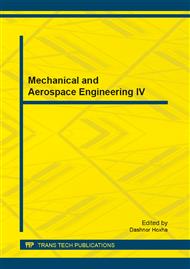p.581
p.586
p.591
p.596
p.601
p.606
p.611
p.616
p.621
Fatigue Life Prediction of Electronic Chips Based on Singular Edge Field
Abstract:
Due to the initiate failure from the interface of solder and singularity of stress and strain field in the area, new fatigue life laws based on equivalent intensity ranges are proposed. The thermal fatigue tests are carried out. With observation by scanning electron microscope (SEM), the cracks begin from the interface of the chip, and propagate along the interface and/or grow with zigzag shape in the solder. Relative tube voltage drop (TVD) as a parameter is conducted to determine the fatigue damage accumulation and the number of thermal cycles for initiate crack growth. The singular field from the interface edge of the chip is obtained from numerical analyses by sub-modeling technique. Two types of solder materials of Sn-3Ag-0.5Cu and Pb-5Sn with new viscous creep constitutive relationship are used. The constitutive model compose of linear curve for small stress and hyperbolic sine form for high stress, respectively. Two shocks are found in one cycle from numerical simulation. Compared the fatigue life from the experiment observation with the numerical prediction, it is noticed that the new fatigue laws do not depend on an artificial point near the interface edge in a chip, and give reasonable and reliable results.
Info:
Periodical:
Pages:
601-605
Citation:
Online since:
August 2013
Authors:
Price:
Сopyright:
© 2013 Trans Tech Publications Ltd. All Rights Reserved
Share:
Citation:


